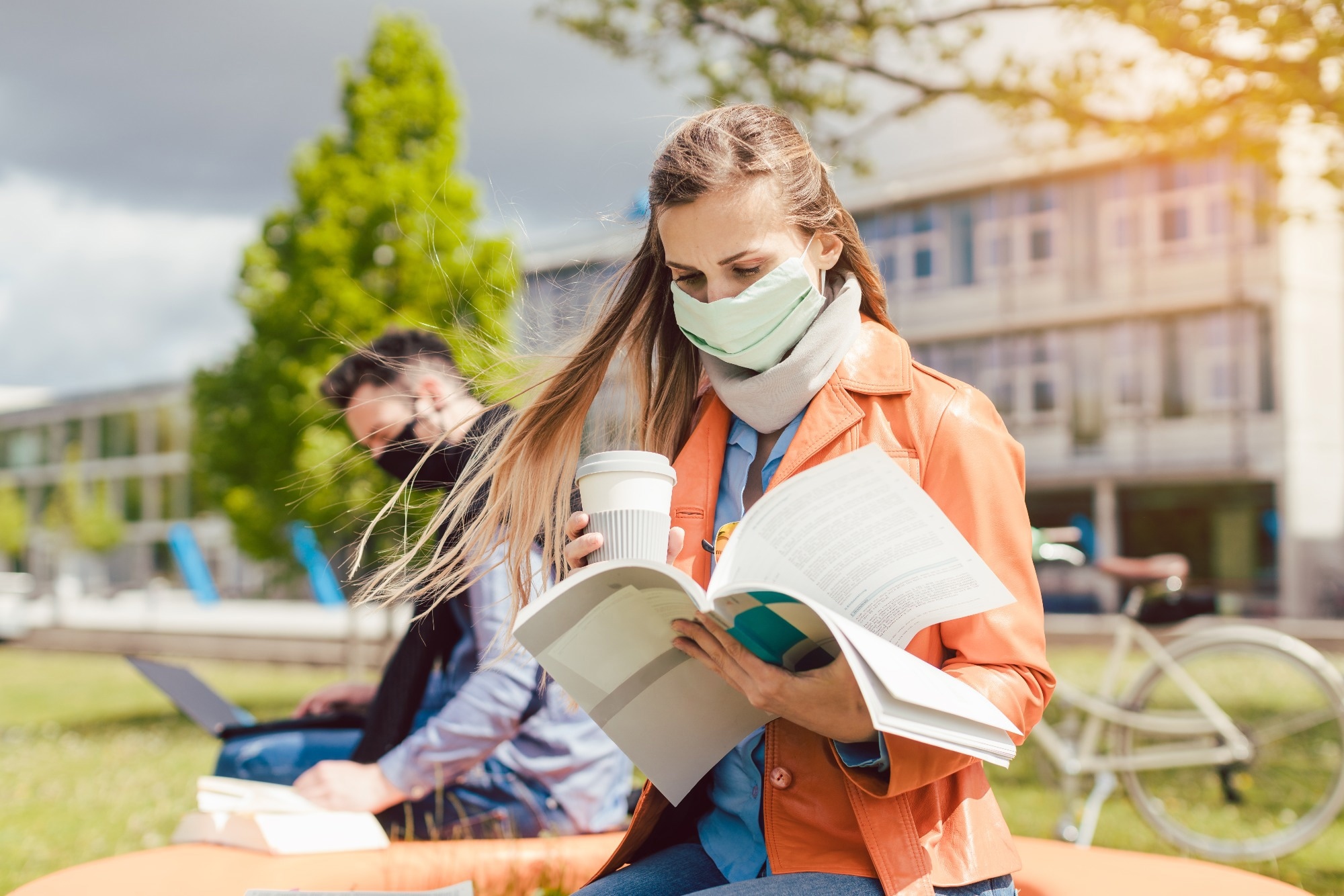In a recent study published in JAMA Network Open, researchers evaluated changes in the mental health status of university-attending students in France 15.0 months post-commencement of the severe acute respiratory syndrome coronavirus 2 (SARS-CoV-2) pandemic.
 Study: Mental Health Symptoms of University Students 15 Months After the Onset of the COVID-19 Pandemic in France. Image Credit: Kzenon/Shutterstock
Study: Mental Health Symptoms of University Students 15 Months After the Onset of the COVID-19 Pandemic in France. Image Credit: Kzenon/Shutterstock
The COSAMe [conséquences de la pandémie de coronavirus disease 2019 (COVID-19) sur la santé mentale des étudiants] survey-based study was conducted to assess the effects of the SARS-CoV-2 pandemic on the mental well-being of French university students. The survey findings indicated a marginal reduction in stress, depression, and anxiety between the initial lockdown/first measurement time (T1, between 15 June and 15 July 2020) and a month after the lockdown ended or the second measurement time (T2).
However, the prevalence rates of suicidal thoughts had elevated between T1 and T2, and one out of every five university students potentially had PTSD (post-traumatic stress disorder) at the second measurement time. The findings underscored the importance of evaluating the long-lasting mental health consequences of COVID-19.
About the study
In the present cross-sectional observational nationwide study, researchers utilized data obtained at T3 (third measurement time) of the COSAMe survey, conducted 15.0 months post-beginning of the SARS-CoV-2 pandemic to determine the prevalence rates of symptoms such as anxiety, stress, PTSD, suicidal thoughts, and depression and determine factors related to poor mental health outcomes.
The third part of the COSAMe study was conducted between 21 July and 31 August 2021 via questionnaires emailed to students across 82 universities in France. The prime study outcomes included suicidal thought prevalence, PTSD [using PCL-5 (PTSD checklist for the diagnostic and statistical manual of mental disorders, fifth edition)], anxiety [using STAI Y-2 (state-trait anxiety inventory, state subscale)], stress [using PSS-10 (10-item perceived stress scale)], and depression [using BDI-13 (13-item Beck depression inventory)] during the third measurement time.
Prevalence rates at the third measurement time were compared with those at the first and second measurement times. Only university students living in France during the initial lockdown period were included in the study. A hundred participants were offered €100 compensation for completing the T3 survey. Multivariate logistic regression modeling was performed, and the associations between risk factors and mental health outcomes were reported as OR (odds ratio) values.
Covariates considered for evaluating the association of COVID-19 with mental health included sociodemographic characteristics (sex, age, academic extent of education, nationality, residence, and presence/absence of children), economic difficulties, precariousness, health-associated information, psychiatric history, chronic conditions, SARS-CoV-2 test reports, social separation, and quality of SARS-CoV-2 infection-associated information.
Results
In total, 44,898 university students (81%) filled out the questionnaires. Most (71%) of the survey respondents were female (n=31,728), with a median age of 19 years. The age-standardized and sex-standardized prevalence of anxiety, stress, suicidal thoughts, PTSD, and depression were 24%, 21%, 14%, 30%, and 15%, respectively. Compared to the reduced prevalence rates at the second measurement time, elevated rates were observed at T3 with 3.0%, 14%, and 22% increases in stress, anxiety, and depression, respectively.
The prevalence rates for suicidal thoughts showed an increasing trend from T1 (11%), T2 (12%), to T3 (14%), and the probable PTSD prevalence increased from one in five students to one in three students in the period between the second and third measurement times. The prevalence at T3 was greater than at T1 for depression (15% versus 14%) but for anxiety (24% versus 26%) and stress (21% versus 22%). PTSD prevalence was especially high at T3 (30%) compared to that at T2 (18%).
Feminine and non-binary individuals, those without children, those residing in urban areas, and respondents with economic difficulties, chronic conditions, psychiatric follow-up history, SARS-CoV-2 infection history, social separation, and those having low quality of COVID-19-associated information were at an increased risk of poor mental health outcomes at the third measurement time. The adjusted ORs for stress among females, suicidal ideation in non-binary individuals, anxiety among respondents having children, and depression among rural residents were 2.2, 5.1, 0.7, and 0.8, respectively.
In comparison to bachelor degree holders, Ph.D. degree holders had a lower risk of depression (OR 0.6), PTSD (OR 0.7), and suicidal thoughts (OR 0.6). Master degree holders were at lower risk of suicidal thoughts (OR 0.9) and depression (OR 0.8) but at a greater risk of developing anxiety (OR 1.1). Foreign students had a greater risk of PTSD (OR 1.2), suicidal thoughts (OR 1.9), and depression (OR 1.1).
Compared to respondents with none or few financial difficulties, those documenting moderate difficulties had OR values ranging between 1.4 for suicidal thoughts and 1.8 for PTSD, and individuals with considerable difficulties had OR values ranging between 2.2 for suicidal thoughts and 3.4 for depression. Among individuals with prior COVID-19 history, OR values ranged between 1.1 for suicidal ideation and 1.4 for PTSD, and among those with chronic conditions, OR values ranged between 1.5 for PTSD and 1.6 for suicidal ideation.
Among individuals with psychiatric follow-up history, OR values ranged between 2.1 for PTSD and 2.8 for suicidal ideation, and among those who were socially separated, OR values ranged between 1.3 for PTSD and 2.1 for depression. The OR values ranged between 1.3 for PTSD and 1.4 for suicidal ideation among participants with low quality of COVID-19-associated information (scores between 4.0 and 5.0) and between 1.6 for ideation and 1.8 for PTSD if the scores were even lower (below 4.0).
Overall, the study findings showed severe long-term consequences of the SARS-CoV-2 pandemic on the psychiatric well-being of university students in France and underscored the need for prioritizing the development of prevention strategies and policies to restore the mental-wellbeing of students.